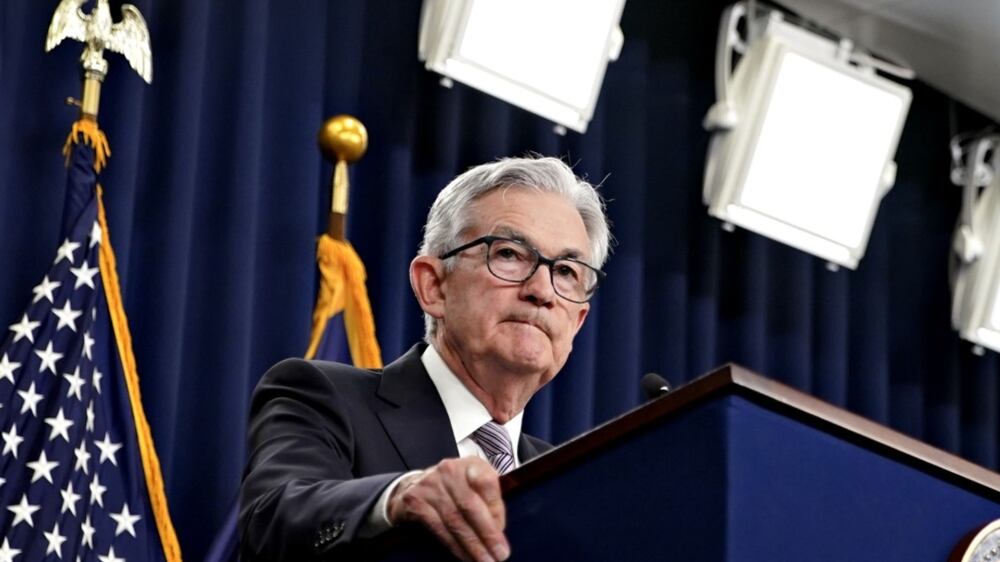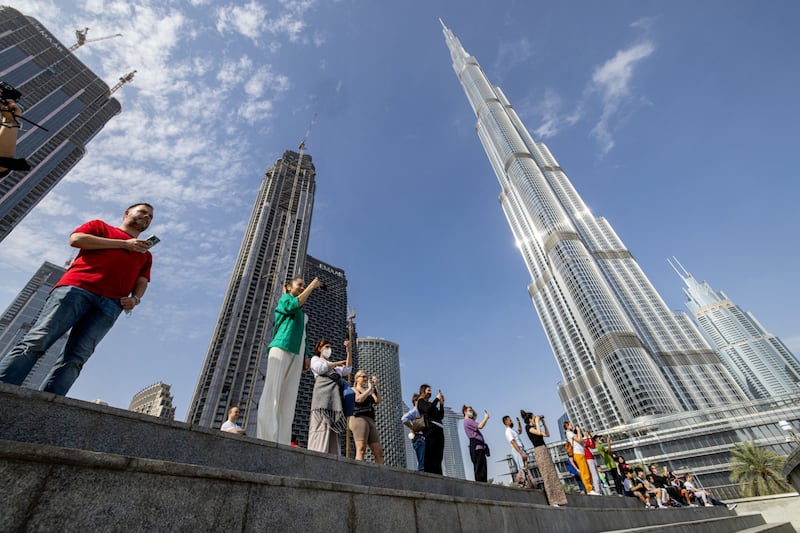The central banks of the UAE, Saudi Arabia, Bahrain, Qatar and Oman raised their benchmark borrowing rates after the US Federal Reserve increased its key interest rate to tame inflation and restore price stability.
The Fed bumped up the policy rate for a third consecutive time this year by 25 basis points (bps) as the labour market remains tight, the unemployment rate is at a multi-decade low and the central bank continues to try to bring inflation down to its target range of 2 per cent after prices hit a four-decade last year.
The move comes at a time of mounting concern about the stability of the regional banking sector in the US, the world's largest economy, after recent failures of four lenders.
This is the tenth rate increase by the US central bank since it started monetary tightening in March 2022, pushing rates in the US to their highest since 2007, shortly before the start of the 2008 global financial crisis.
US inflation data released last month showed that price pressures are not over yet, with the Fed’s preferred inflation measure, the core personal expenditures price index, up by an annual 4.6 per cent.
“The US banking system is sound and resilient. Tighter credit conditions for households and businesses are likely to weigh on economic activity, hiring and inflation,” the Fed said.
“The extent of these effects remains uncertain. The committee remains highly attentive to inflation risks."
Most central banks in the six-member GCC bloc follow the Fed's policy rate moves due to their currencies being pegged to the US dollar, except for Kuwait which links its dinar to a basket of currencies.
The Saudi Central Bank, better known as Sama, raised its repurchase agreement (repo) rate by a quarter-point to 5.75 per cent and its reverse repo rate by a similar margin to 5.25 per cent.
The kingdom's inflation rate for 2022 was estimated at 2.6 per cent and, according to preliminary forecasts, has been forecast at 2.1 per cent in 2023, Saudi Finance Minister Mohammed Al Jadaan said in December. Consumer prices in the kingdom rose 2.7 per cent year-on-year in March, the lowest rate of price growth since July 2022.
The UAE Central Bank raised its benchmark borrowing rate raised its base rate for the overnight deposit facility by a quarter of a percentage point to 5.15 per cent from 4.9 per cent, effective from Thursday.
It maintained the rate applicable to borrowing short-term liquidity from the regulator through all standing credit facilities at 50 bps above the base rate, the regulator said on Wednesday.
The base rate, which is anchored to the Fed's interest on reserve balances (IORB), signals the general stance of the UAE Central Bank’s monetary policy and provides an effective interest rate floor for overnight money market rates.
The UAE economy is estimated to have grown by 7.6 per cent last year, the highest in 11 years, after expanding 3.9 per cent in 2021, according to the country's Central Bank. It is projected to grow by 3.9 per cent in 2023 and 4.3 per cent in 2024, according to the regulator.
Meanwhile, the Central Bank of Bahrain also increased its key rate on one-week deposits by 25 bps to 6 per cent.
The Bahraini regulator raised its interest rate on overnight deposits by a quarter-point to 5.75 per cent, and by a similar margin on its four-week deposit rate, raising it to 6.75 per cent. The lending rates was also increased by a quarter of a percentage point to 7 per cent.
The Central Bank of Qatar raised its repo rate by a quarter of a percentage point to 5.75 per cent. It also increased its deposit rate by a similar margin pushing it to 5.5 per cent and the lending rate by 25 bps to 6 per cent.
The Central Bank of Oman increased its repo rate for local banks by 25 bps to 5.75 per cent. The repo rate is the policy rate that allows commercial banks to acquire short term liquidity from the central bank as the lender of last resort.
The Central Bank of Kuwait left rates unchanged. It last raised its key policy rate, the discount rate, to 4 per cent in January 2023.
US Federal Reserve raises interest rates for tenth consecutive time

Inflation in GCC economies has been significantly lower than in most advanced and emerging countries. This is because subsidies and caps on certain products, the strengthening of the US dollar, and limited share of food in the consumer price index basket have helped to offset imported inflationary pressures and appear to have peaked in the last months of 2022, according to the International Monetary Fund.
Inflation in the Emirates — stoked by increasing energy prices, imported inflation and rising employment — stood at 4.8 per cent in 2022 and has been projected at 3.2 per cent and 2.8 per cent in 2023 and 2024 respectively, according to the Central Bank's Quarterly Economic Review 2022.
That compares with a global inflation rate of 8.7 per cent in 2022, according to International Monetary Fund estimates. Global inflation is set to fall to 7 per cent this year and 4.9 per cent in 2024, which is still above the preferred 2 per cent target of central banks.
In a report last month, the Institute of International Finance projected an even lower inflation rate of 2.4 per cent for the UAE in 2023, supported by lower global commodity prices and manufacturing unit values.
Despite tighter global financial conditions the UAE's non-hydrocarbon real growth will remain strong at 4.8 per cent this year, the Washington-based IIF said.
That is above the 4.2 per cent estimate of the UAE Central Bank for this year and the 4.6 per cent forecast for 2024.
Annual oil gross domestic product growth is forecast at 3 per cent and 3.5 per cent in 2023 and 2024, respectively, according to the UAE Central Bank.
“Rising interest rates will have limited impact on economic activity in the UAE,” the IIF said.
“The new corporate income tax will be effective in July of this year, boosting non-hydrocarbon revenues in 2024 and 2025, and thus helping to lower the fiscal break-even oil price to below $65 per barrel,” it said.
UAE banks remain adequately capitalised while the average loan-to-deposit ratio edged down to 86 per cent in December 2022, according to the IIF.
The net foreign assets of commercial banks more than doubled to $104 billion at the end of 2022. IIF deposits and credit to the economy to grow by about 8 per cent in 2023.
First quarter results from the banking sector "confirm that economic activity remains robust … sector revenues have increased by almost 50 per cent on average, with profit growth stronger still, at close to 75 per cent year-on-year", Rahul Shah at Tellimer Research said in a research note this week.
"Retail banking is riding on a wave of high consumer confidence and a growing population."
The Emirates remains the main regional destination of foreign direct investment inflows, attracting about $22 billion in 2022, or about 4.4 per cent of GDP, one of the highest among emerging economies, the IIF said.
“Such elevated FDI is explained by the friendly business environment, excellent infrastructure and relatively diversified economy by regional standards,” the IIF said.







